Red light therapy is gaining popularity as a simple wellness tool that many people now use at home. It works by shining specific red lights on your skin, which may help with everything from skin health to muscle recovery. The best part? Adding it to your day doesn't have to be complicated. You can easily fit short red light sessions into things you already do each day. Here are four simple ways to make red light therapy part of your routine, whether you prefer using it in the morning, evening, around workouts, or during quiet moments.

What Is Red Light Therapy and How Can It Improve Your Wellness?
Red light therapy (RLT) is a low-level red light wavelength therapy used to treat a variety of health conditions. Red light therapy is distinct from ultraviolet (UV) light, which damages skin because it uses safe, non-invasive wavelengths that penetrate your skin to reach your cells. The technology is now available in various forms, ranging from professional equipment in doctors' offices to home devices at affordable prices. With increasing interest in all-natural approaches to health, red light therapy has been put into perspective for its potential to contribute to overall health with less risk of side effects.
How Red Light Works in Your Body
Red light therapy works at the cellular level by working on your mitochondria, the energy-producing centers of your cells. When specific wavelengths of red light (typically 630-660 nm) and near-infrared light (typically 810-940 nm) strike your cells, they stimulate the mitochondria to produce more energy in the form of ATP (adenosine triphosphate). This boost in cellular energy causes your cells to function more efficiently and heal themselves quickly. The light also increases blood flow in treated tissues and reduces oxidative stress, which can damage cells. Red light therapy acts directly to increase your body's own healing processes without destroying tissue or causing significant side effects, as opposed to medication or invasive procedures.
Benefits You May Experience From Regular Red Light Therapy
Regular use of red light therapy may provide several health benefits, though individual results can vary.
- Healthier Skin: Regular red light therapy may improve your skin's appearance by reducing fine lines and wrinkles, creating more even skin tone, and helping cuts and scars heal faster.
- Reduced Pain and Inflammation: Research shows that red light therapy can help lower inflammation in the body, which may ease joint pain and reduce muscle soreness after workouts.
- Better Sleep Quality: Some studies suggest that red light therapy could help you sleep better by supporting your body's natural sleep-wake cycle and melatonin production.
- Improved Hair Growth: Red light therapy might stimulate hair follicles, potentially leading to thicker hair and reduced hair loss for some users.
- Mood Enhancement: Research is exploring how red light therapy might help reduce symptoms of seasonal depression by affecting brain chemicals related to mood.
- Enhanced Brain Function: Early studies indicate that red light therapy could support brain health, potentially improving memory, focus, and overall mental clarity.
Strategy 1: Add RLT into Your Morning Ritual for an Energizing Start
Now that you understand how red light therapy stimulates cellular energy, it makes sense to add it to your morning routine. Morning treatments can benefit from the energy-stimulating effects of the therapy by starting your day on a cellular-optimized footing. Adding red light therapy to your morning routine takes only 10 minutes, but can potentially set you up for a good day.
Easy Ways to Combine Red Light Therapy with Your Morning Routine
Incorporating red light therapy into your existing morning routine can help you be consistent without adding more stress to your day. By incorporating therapy sessions into activities you already perform, you'll be more likely to stick with it in the long term. Here are a few easy ways to incorporate red light therapy into your mornings:
- During Coffee Time: Position your red light device to use during your coffee or tea time in the morning, so you can get some work done while multitasking during that quiet time of the morning.
- While Checking News: Position your device to use while waking up to catch up on daily news, checking through social media, or checking your day's calendar.
- When Checking Emails: Utilize your red light therapy time to filter through your email inbox and address urgent messages, putting the productive use of 10-20 minutes to good use.
- During Skincare Routine: Make use of your morning skincare routine to include red light therapy, which may also enhance the benefits of both routines simultaneously.
- While Eating Breakfast: Place your device on the breakfast table to use while eating your breakfast, converting necessary nutrition time into therapeutic time as well.
- While Brushing Teeth: Place your device on the bathroom counter for use during brushing your teeth and other hygiene routines that you perform every day without fail.
Morning Light Benefits for Your Energy and Alertness
Starting your day using red light therapy can have some unique advantages regarding your body's natural rhythms and energy levels. Morning light exposure is synchronized with your biological clock in many useful ways. Take into consideration these notable advantages of morning red light therapy sessions:
- Better Sleep-Wake Patterns: Morning exposure to light sets your body's natural wake-sleep rhythm into healthy patterns that improve the overall quality of your sleep.
- Balanced Hormone Levels: Daylight therapy in the morning alerts your brain to reduce melatonin levels and increase cortisol and serotonin levels that produce natural wakefulness.
- Improved Mood: Morning light exposure, which causes an increase in serotonin, can cause a positive mood that lasts throughout your day.
- Increased Energy: Most users feel more energized and alert after morning sessions, which is a natural alternative or supplement to caffeine.
- Optimal Timing: Morning therapy aligns with your body's natural circadian rhythm, making this perhaps the most optimal timing for red light therapy.
- All-Day Effects: Starting therapy in the mornings may enable you to experience a boost in energy and concentration throughout the day rather than lasting only for a bit.
Where to Place Your Device for Morning Success
The location of your red light therapy device can significantly impact whether you'll use it consistently. Finding the perfect spot involves balancing visibility, convenience, and practicality. Here are several considerations for positioning your device for maximum morning success:
- Visible Location: Choose a spot where you'll see the device every morning, serving as a visual reminder to incorporate therapy into your routine.
- Easy Access: Select a location that's easy to access without extra effort, removing barriers that might prevent consistent use.
- Next to Your Bed: A bedside table works well if you prefer to begin your day with a session before even getting out of bed.
- Near an Outlet: Consider proximity to an outlet to avoid the hassle of moving furniture or finding extension cords.
- Comfortable Position: Ensure the location allows comfortable positioning during use, as discomfort might discourage regular sessions.
- Leave It Out: Consider storing the device in its regular use position rather than putting it away, reducing friction for your next session.

Strategy 2: Utilize RLT During Your Evening Wind-Down to Promote Relaxation
Although red light therapy in the morning starts your day, nighttime sessions can serve a just as valuable but different purpose. Evening red light therapy can drive your body's natural drift toward rest and repair. Through this calculated use, you can maximize RLT's potential relaxing effects when your body is already gravitating towards sleep.
Simple Ways to Include Red Light Therapy in Your Evening Routine
Incorporating red light therapy into your evening relaxation routine gives you the perfect chance to relax and be well. By intertwining therapy with something you already have in place, you can establish a long-term nighttime routine. These are simple ways to incorporate red light therapy into your evenings:
- During Reading Time: Put your red light device next to your favorite reading chair, and read and benefit from therapy simultaneously.
- While Listening to Music: Position your device so that you can sit and unwind with calming music and enjoy a multi-sensory relaxation session.
- During Gentle Stretching: Use your red light therapy session to do light yoga or stretching, perhaps even enhancing flexibility as you are receiving light therapy.
- While Watching TV: Place your device near where you sit for evening TV viewing, just be careful to lower the screen brightness and volume for a comfortable setting.
- As Part of Meditation: Add red light therapy as part of meditation or mindfulness practice at night for a well-rounded wellness practice.
- During Evening Skincare: Make use of your therapy device while doing your evening skincare routine, and use your time productively.
How to Reduce Blue Light for Better Evening Results
Exposure to blue light in the evening can interfere with your body's natural melatonin production and sleep preparation process. Establishing the right lighting environment enhances the effectiveness of your evening red light therapy treatment. Here are important tips on how to minimize blue light exposure for better results:
- Limit Screen Time: Cut down or minimize phone, computer, and tablet usage at least 1-2 hours prior to bed to prevent disruption from blue light.
- Use Device Settings: Activate night mode, blue light filters, or dark mode on any electronic device you use in the evening.
- Change Home Lighting: Alter home lighting to warmer colors by using amber bulbs or applying dimmer settings with lower blue light.
- Create Darkness: Apply red light therapy in an otherwise dark room to enhance its calming effect and eliminate competing light sources.
- Wear Blue Light Glasses: If you must use screens after your red light therapy session, blue light blocking glasses can help protect your body's natural transition to sleep.
- Set Device Timers: Have devices automatically switch to warmer color temperatures during the evening.
- Use Candlelight: Add soft candlelight to your evening lighting, which contains very little blue light and creates a relaxing atmosphere.
Strategy 3: Use Red Light Therapy With Your Workouts
Red light therapy (RLT) can be a valuable addition to your fitness routine. Research suggests that using RLT before and after workouts may help with both performance and recovery. By keeping your device near your exercise area, you can easily incorporate this therapy into your regular fitness activities.
Before Your Workout
A quick 15-20 minute red light session about 30 minutes before exercising may help prepare your body by:
- Increasing blood flow to muscles
- Boosting cellular energy production
- Potentially reducing exercise fatigue
Focus the light on the specific muscle groups you plan to work that day. While not a replacement for a proper warm-up, RLT can be an extra step to help prepare your body for activity.
After Your Workout
Using red light therapy after exercise may speed up recovery:
- A 15-20 minute session within an hour after your workout is ideal
- Target the muscles you just worked
- It may help reduce muscle soreness and inflammation
- Could potentially shorten recovery time between training sessions
Many users report less stiffness and discomfort after challenging workouts when using RLT consistently.
Making It Convenient
The easier it is to use your device, the more likely you'll stick with it:
- Keep your RLT device in or near your workout space
- Consider wall-mounting options to save space
- Look into portable devices if you exercise at different locations
- Check if your gym offers red light therapy services
When your device becomes part of your workout equipment, you're more likely to use it regularly enough to see potential benefits.
Strategy 4: Combine Red Light Therapy with Mindfulness
Red light therapy sessions give you an excellent opportunity to take care of your body and mind at the same time. When the light works on your cells, you can use these calm moments for activities that calm your mind and reduce stress. This combination is a proper way to spend your time and might bring benefits to both activities.
Simple Mindfulness Practices During RLT
Do these easy mindfulness exercises during your red light therapy:
- Deep Breathing: Inhale slowly through your nose for four counts, hold for a second, then exhale for six counts. This naturally engages your body's relaxation response.
- Meditation: Sit comfortably in front of your device with good posture. Use meditation apps with headphones—many offer sessions equal to or shorter than the standard 10-20 minute treatment time.
- Body Scan: Slowly bring your attention from head to toe, noting physical sensations without judgment. This exercise increases body awareness and releases tension.
- Guided Imagery: Listen to recordings that guide you through calming mental imagery or visualizations while you are treated with light therapy.
The relaxation of these exercises may increase blood flow, which can help your body absorb the light therapy more effectively.
Creating a Mental Sanctuary
Make your red light therapy session an intentional break for your mind:
- Implement a "no digital distractions" policy during sessions—phones away, notifications off
- Take a minute before starting to mentally transition out of your day
- Keep a small notebook with you to jot down in a hurry any meaningful thoughts that arise, so you can transition back into the moment
- Be consistent with short daily sessions rather than occasional longer ones
Many users find that this combined therapy becomes a welcome retreat they look forward to rather than just another task on their to-do list.
How Can You Build Consistency with Your Red Light Therapy Routine?
Why Does Regular Use Matter?
Consistency is crucial for red light therapy to be effective. Research shows the best results come from regular sessions—typically 3-5 times weekly for at least 4-8 weeks. Like exercise or healthy eating, occasional use offers minimal benefits while regular practice delivers meaningful results.
To track your progress:
- Keep a simple journal, noting when you use your device
- Record any changes you notice in how you feel
- Take occasional photos if you're using RLT for skin concerns
- Be patient—significant benefits often take weeks to become visible
While some people experience immediate relaxation during sessions, improvements in skin texture, muscle recovery, and other benefits develop gradually with consistent use.
How Can You Fit RLT Into Your Life?
The most effective routine is one that fits naturally into your life:
- Morning person? Start your day with a session while reading or planning your day
- Evening person? Make RLT part of your wind-down routine before bed
- Busy schedule? Keep your device where you spend the most time, like near your desk or TV
- Frequent traveler? Consider a portable device as a backup
Many successful users adapt their approach to their changing schedules—perhaps doing morning sessions on weekdays and post-workout sessions on weekends.
Remember that missing an occasional session won't erase your progress. What matters most is returning to your routine rather than abandoning it when life gets busy.
What Safety Guidelines Should You Follow?
For safe and effective treatment, always follow your device's specific instructions:
- Position the device at the recommended distance (usually 6 inches from your body)
- Use for the suggested duration (typically 15-20 minutes per session)
- Follow the recommended frequency (often daily or every other day)
- Keep the light surface clean to ensure maximum effectiveness
Make Red Light Therapy Your Daily Wellness Habit Starting Today
It doesn't have to be difficult to get red light therapy incorporated into your lifestyle. The real trick is just being there consistently. Pick what works for you—morning sessions to start the day, evening treatments to unwind, post-workout therapy to recover, or combining it with meditation for mental and physical benefit. The technique isn't as important as just doing it. Refer to your device instructions for precautions, and remember that consistent use is what yields results in the long term. Don't regard it as an extra activity, but as a simple exercise of self-love—a few minutes to yourself.



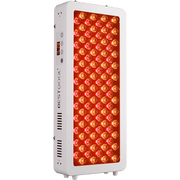
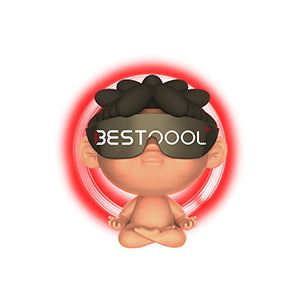









 Small
Small
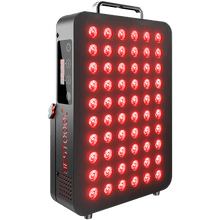
 Moderate
Moderate
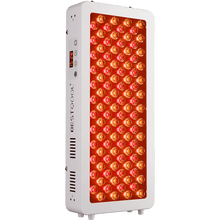
 Moderate
Moderate
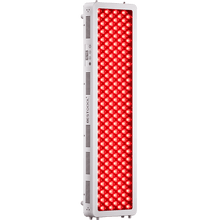
 Moderate
Moderate
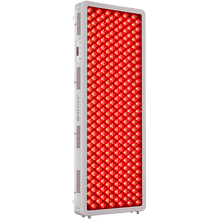
 Full
Full



